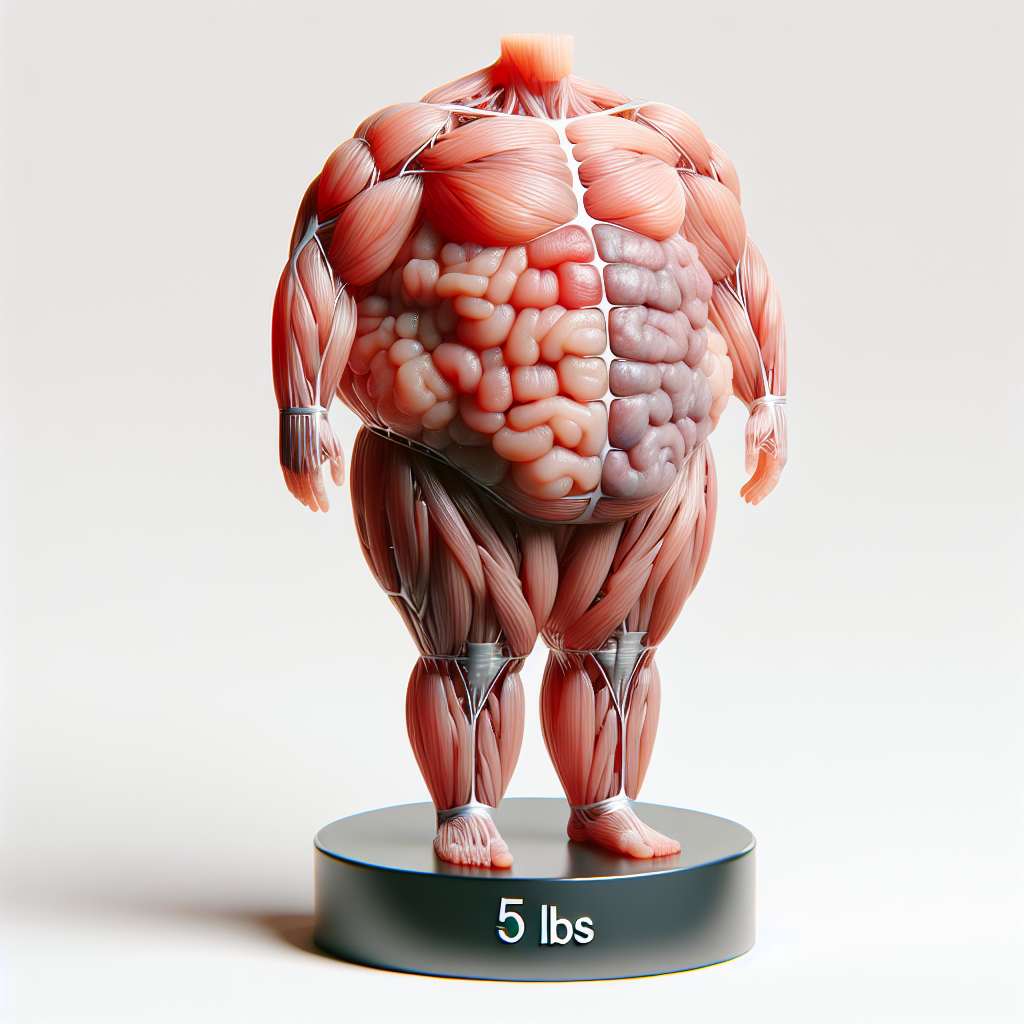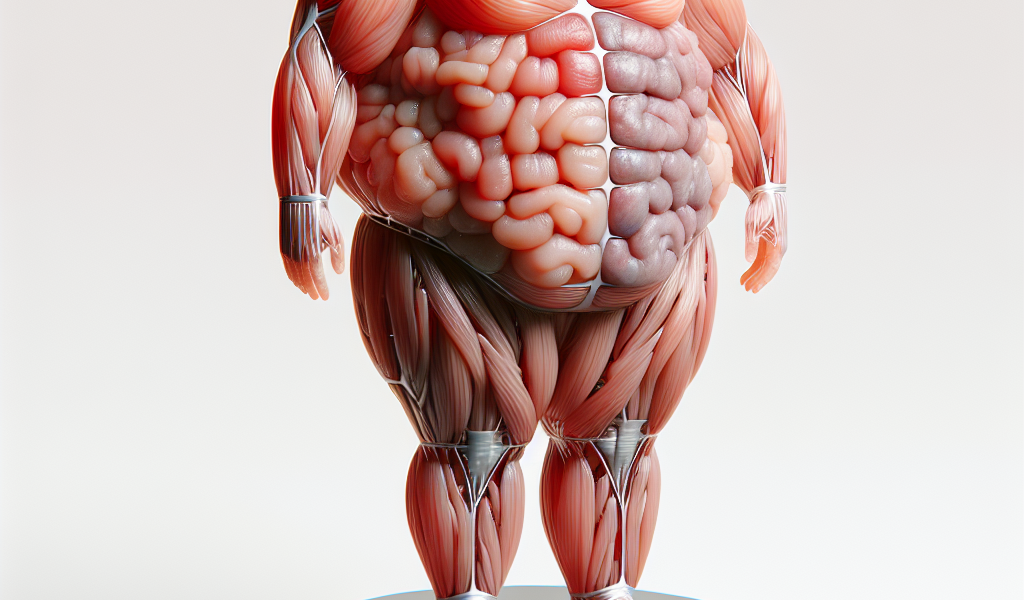A Deep Dive into What 5 Lb of Fat Looks Like
In “A Deep Dive into What 5 Lb of Fat Looks Like”, the reader is presented with an informative exploration of body fat, utilizing comparisons and vivid descriptions to provide an understanding of its physical appearance. By relating it to real-life examples and experiences such as Sophie’s healthy 30% body fat range, the ambiguity around what exactly a pound or 5 pounds of fat resemble becomes much clearer. The article also utilizes thought-provoking discussions on body fat, including misconceptions, implications on health, and factors contributing to body fat storage. Furthermore, it uncovers the less-discussed aspects of body fat and its societal perceptions. This comprehensive guide offers visual references, health implications, and shakes the stigma surrounding body fat, giving readers a fresh perspective.

Understanding Body Fat
Defining what body fat is
Body fat is a crucial component of the human body, playing several critical roles in maintaining health and well-being. It refers to the layer of lipids (made up of triglycerides) located beneath the surface of the skin. Body fat is essentially concentrated energy that the body can utilize whenever necessary.
The role of fat in the human body
Fat serves multiple vital functions in the human body. One of the primary purposes is providing energy storage. When you consume more calories than you expend, these extra calories are stored as body fat. It also aids in temperature regulation, offering insulation to conserve heat. Moreover, fat acts as a protective cushion for organs against potential damage.
Difference between essential body fat and storage body fat
Essential body fat is the minimum amount of fat the body needs to maintain physiological functions efficiently – this includes the proper functioning of organs and maintaining hormonal balance. Women typically have a higher percentage of essential body fat than men.
On the other hand, storage body fat accumulates when excess energy is consumed and is stored in the form of adipose tissue. Although this type of fat can be useful as a reserve for energy, excessive storage fat may contribute to obesity and related health problems.
What Does A Pound of Fat Look Like?
Dimensions and physical appearance of 1 lb of fat
A pound of body fat is roughly the size of a small grapefruit or an average-sized brick. Its color can vary from a pale yellow to a more deep yellow-orange. It also has a somewhat waxy and squishy consistency.
Comparing 1 lb of fat to common household objects
Visualizing a pound of body fat in relation to everyday objects can provide a better perspective. For instance, one pound of body fat is roughly the equivalent size of four regular sticks of butter put together.
How Fat Accumulates in the Body
How our bodies store fat
Our bodies store fat as a fuel source. When we eat, the body breaks down the nutrients into glucose for immediate energy needs and stores excess glucose as glycogen in the muscles and liver. When the glycogen stores are full, the excess glucose is converted into triglycerides—our body’s most concentrated form of energy—and stored in our fat cells.
Factors contributing to fat accumulation
Several factors contribute to fat accumulation, including genetics, diet, physical activity levels, sleep, stress, and metabolic health. Consuming high-calorie and low-nutrient foods, especially coupled with an inactive lifestyle, can significantly contribute to adipose tissue accumulation.
The importance of a balanced diet in fat storage
A balanced diet plays a crucial role in managing body fat levels. Consuming a variety of nutrient-rich foods ensures intake of necessary vitamins and minerals while also helping maintain an optimal balance of macronutrients—proteins, carbohydrates, and fats.
Health Implications of Excessive Body Fat
Effects of excess body fat on health
Having excessively high levels of body fat can lead to numerous health issues. These include heart disease, diabetes, high blood pressure, stroke, and certain types of cancer. It can also lead to sleep apnea and joint problems, thanks to the added weight and pressure on the joints.
Understanding fat-related health conditions
Some fat-related health conditions stem from the distribution of fat in the body. For instance, having a high amount of visceral fat—which is stored around the abdominal organs—can significantly increase the risk of developing insulin resistance, leading to type 2 diabetes and heart disease.
Consequences of too little body fat
Having too little body fat can also pose health risks. These may include nutrient deficiencies, hormonal imbalances, decreased immune function, and an increased risk of osteoporosis.
Losing Fat: The Journey from Fit to Fat to Fit
Experiences from people who have shed off significant fat
Many people who have managed to lose a significant amount of body fat report improvements in physical health, mood, self-esteem, and overall quality of life. However, fat loss journeys often involve enduring physical obstacles, emotional struggles, and significant lifestyle changes.
Challenges along the path of losing fat
Losing fat often includes changing one’s behavior, habits, and mindset, which is not an easy task. Individuals face challenges like getting motivated, staying consistent, handling cravings, and fitting in exercise amidst busy schedules.
Why ‘fit to fat to fit’ was cancelled
‘Fit to Fat to Fit’, a prominent weight-loss television show, was canceled due to several concerns, including potential harm to the trainers’ overall health and wellbeing. However, despite its cancellation, it offered valuable insights into the struggles and triumphs of weight loss.
Visualizing Larger Amounts of Fat
What larger quantities of fat look like (20 lbs, 30 lbs, 40 lbs, 100 lbs)
To better understand what significant fat loss looks like, it’s helpful to visualize larger quantities of fat. Imagine ten bricks for 20 lbs, approximately half a sack of potatoes for 30 lbs, or the weight of an average 3-year-old child for 40 lbs. A person who has lost 100 lbs has essentially shed the equivalent of an entire low-end mountain bike in weight.
Weight loss transformations put into perspective
Seeing people before and after significant weight loss can provide a dramatic perspective on what losing larger amounts of fat can look like. These transformations highlight not only the physical changes but also the improved health and increased self-esteem that often accompany significant weight loss.
Society’s Perceptions and Misconceptions about Fat
Discussing what people don’t talk about when they talk about fat
There’s an undercurrent of shame, guilt, and judgment often attached to body fat. People may not address the psychological toll that being overweight or obese can bring, including the struggle with self-image, social exclusion, and the constant battle against bias and discrimination.
The stigma surrounding being overweight or obese
There exists a prevalent stigma of laziness and lack of willpower associated with being overweight or obese. This false stereotype often hinders obese individuals from seeking medical help due to the fear of judgment, further exacerbating the problem.
How the media contributes to fat stereotypes
The media often perpetuates fat stereotypes by portraying slim body types as the ideal, thereby triggering feelings of inadequacy and low self-esteem among those with higher body fat percentages. This selective representation can also encourage unhealthy diet habits and eating disorders in a bid to conform to these unrealistic standards.
What Does 5 Lb of Fat Look Like?
Physical properties and dimensions of 5 lb of fat
Five pounds of fat is approximately the size of a small loaf of bread. Like 1 lb of fat, it’s yellow to yellow-orange in color and has a soft, squishy texture.
Comparing 5 lb of fat to everyday objects
To visualize, imagine a standard bag of sugar or flour—that’s approximately what 5 pounds look like. Another practical comparison is a 5-pound chihuahua or a regular-size domestic cat.
Fat in Diet and Nutrition
Different types of fat in foods
There are four primary types of fat in foods—saturated, trans, monounsaturated, and polyunsaturated fats. Saturated and trans fats are typically solid at room temperature and are often found in animal products and processed foods. Monounsaturated and polyunsaturated fats, generally liquid at room temperature, can be found in plant-based foods like avocados and nuts, as well as fatty fish.
The healthiest fats to include in your diet
Monounsaturated and polyunsaturated fats are considered healthy fats due to their heart-health benefits. Omega-3 and omega-6 fatty acids, types of polyunsaturated fats, are particularly crucial as they are essential fats that the body cannot produce on its own.
Fat-soluble vitamins vs. water-soluble vitamins
Fat-soluble vitamins (A, D, E, and K) need dietary fat to be absorbed by the body, unlike water-soluble vitamins (B vitamins and vitamin C) which dissolve directly in water.
The Body’s Ability to Burn Fat
Exercise methods for burning fat
Cardiovascular exercises like running, cycling, and swimming are effective for burning fat. Strength training also plays a significant role in fat loss by increasing muscle mass, which in turn boosts metabolism.
The role of squats in burning belly fat
Squats are a highly effective exercise for burning fat, including abdominal fat, as they engage multiple muscle groups simultaneously. This muscle engagement results in a higher calorie burn during and after the workout.
Impact of metabolism in fat burning
Metabolism plays a vital role in fat burning. A higher metabolism results in a higher calorie burn, even at rest, aiding in weight loss and fat reduction. Factors that influence metabolism include age, gender, weight, body composition, and physical activity levels. Certain dietary choices can also boost metabolism.

